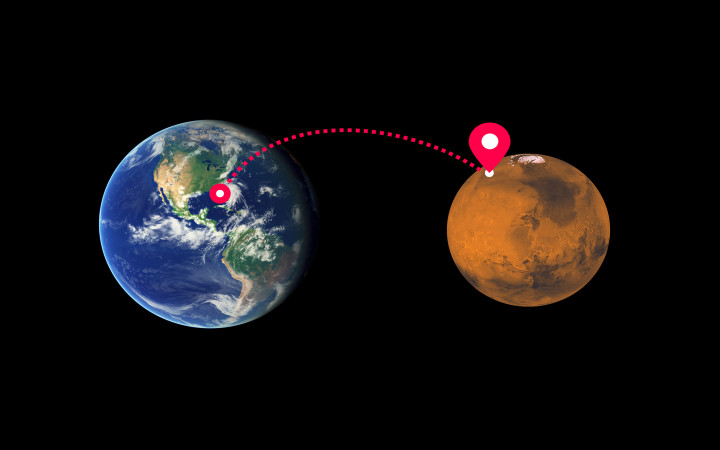Today’s Wonder of the Day was inspired by Elliott from West Des Moines, IA. Elliott Wonders, “How many days does it take to get to Mars from Earth?” Thanks for WONDERing with us, Elliott!
Are we there yet? That's the question that makes parents cringe during a trip. If you've ever driven to another state for a vacation, you know that long trips in the car can get a bit boring. After a few hours, you just want to be there already!
If you're bored by long trips, though, you might not want to be an astronaut. Traveling to outer space requires much more patience than your average trip to the beach.
The United States has sent astronauts to the moon and into orbit around Earth. Many space enthusiasts dream of the day when there will be a manned mission to the “Red Planet" of Mars.
Earth is sometimes referred to as the “third rock from the Sun," which would make Mars the fourth rock from the Sun. Even though it's the next planet over, it's still a long way away.
Like Earth, Mars revolves around the Sun, although on a different path than Earth does. Every 26 months, Mars reaches a point at which it's as close as it ever gets to Earth. This point is called opposition and, at opposition, Mars is between 34.6 and 63 million miles away, depending on what year it is.
Thirteen months after opposition, Mars reaches conjunction, which means Mars and Earth are on opposite sides of the Sun and as far away from each other as they can get. At conjunction, Mars is almost 250 million miles from Earth.
Obviously, if you want to travel to Mars, it would be best to do so at the point of opposition, when Mars is “only" 35-63 million miles away. That is why rocket scientists time their unmanned missions to Mars to coincide with opposition windows every 26 months. The most recent opposition window was in May 2016 and the next one will be in 2018.
If you dream of one day being an astronaut on the first manned flight to Mars, be prepared for a long trip. Scientists estimate a trip to Mars and back would take 400-450 days. Would you be willing to spend over a year in a spacecraft just to get to Mars and back? You could be saying “Are we there yet?" for months on end! Plus, what would you pack?
Besides the long trip, a manned mission to Mars presents many other difficulties. Scientists worry about astronauts being exposed to cosmic rays and other radiation during the long trip. They also are concerned about the physical effects astronauts would experience from prolonged exposure to a low-gravity, low-light environment.
Maybe the factor hardest to predict, though, is the psychological effect astronauts might suffer as a result of isolation from Earth. No one is really sure what mental stress would be caused due to lack of contact with the friends and family the astronauts leave behind.
Other barriers to such a manned mission to Mars include fuel for such a long trip, as well as oxygen, water, and food for astronauts on such an extended mission. Unfortunately, Mars has a very thin atmosphere that would not normally support human life.
Despite these difficulties, countries around the world are planning for future manned missions to Mars. In 2004, the U.S. identified a manned Mars mission as a long-term goal. In 2007, NASA stated that it hopes to put a man on Mars by 2037.
Are you up for a future mission to Mars? You never know what technology will be developed between now and then. Some scientists believe that advanced engines powered by nuclear energy could shorten the trip to Mars to only 39 days. Can you imagine how fast that spaceship would be traveling?




